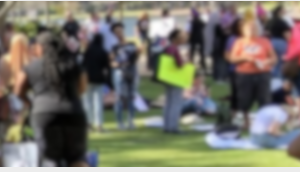

Failure to Launch: An Augmented Thick Description of #womenswave
L. Corinne Jones: University of Central Florida
#WomensWave: A Brief History of the Women’s March
Teresa Shook organized the first Women’s March after the controversial 2016 presidential election (Woerner, 2017) in response to the sexist comments and behaviors of newly-elected Donald Trump (Stein, 2016). The first Women’s March on Washington, D.C., which attracted nearly 500,000 protesters, took place on January 21, 2017, the day after Trump’s inauguration. It spurred more than 600 sister marches across the country (Woerner, 2017), even more across the globe, and eventually led to the formation of Women’s March, Inc.
As noted by Tetreault (2019), from the beginning, the march was plagued by lack of diversity and lack of intersectionality. The organizers originally called the march the Million Woman March, but quickly received backlash for appropriating the name from the 1997 Black Women’s March in Philadelphia (Agrawal, 2019; Rogers, 2016b). Even after the name change to Women’s March, women and allies also rightly criticized the marches for their lack of intersectionality and inclusivity (Rogers, 2016b). Many women of color did not feel welcome or safe in the movement, citing the fact that 53 percent of white women voted for Trump (Rogers, 2016a, 2016b). Furthermore, through women felt united in their espousal of feminism, they felt divided on other issues, including reproductive rights, gun-control, same-sex marriage, and immigration (Rogers, 2016b).
Women and allies continued to hold national marches and sister marches since the protest in 2017. The 2019 march was titled “Women’s Wave” (Peoples Dispatch, 2019) and the Women’s March Global themed the 2019 event to end violence against women, calling it a #womenswave (Women’s March Global, Inc., 2019). The national organization (Women’s March, Inc.) focused on Medicare for all and over 200 sister marches took place across the country (Women’s March National, 2019).
However, lack of intersectionality and division have continued to plague the movement. In 2019, the march faced criticisms of anti-Semitism over some of the national organization’s leaders’ ties to Louis Farrakhan, who has made multiple anti-Semitic comments (McCammon, 2019). Though the leaders of the national movement made efforts to repair their relationship with Jewish women, they did not denounce Farrakhan, which struck a harsh chord with Jewish women, as anti-Semitic hate crimes spread across the United States. Furthermore, some local marches distanced themselves from the national organization (Schmidt, 2019). While the national movement sought to publicly address criticisms of anti-Semitism and prejudice (Women’s March National, 2018), calling all forms of bigotry “indefensible,” the cloud of anti-Semitism still hung over the marches.
Like many other recent social movements, members of the Women’s March movement used hashtags for promotion and to encourage users to create content (pointing to invention), spread awareness (spreadability), and energize those involved to make real-world changes (consequentiality). For the past three years, the movement has used #WomensMarch. Though there appear to have been instances of #womenswave used before 2019, the 2019 march saw the proliferation of #womenswave, presumably referencing to the title of the 2019 march.
While previous scholars have pointed to the positive potential of circulation in terms of spreadability, and consequentiality, #womenswave points to how it is important to consider the content of a hashtag in terms of its impact and success as well. Though several scholars have shown how hashtags and memes can be used positively for social change (Bonilla & Rosa, 2015; Edwards & Lang, 2018; Navar-Gill & Stanfill, 2018; Vie, 2014), not all hashtags accrue the “thing-power” of hashtags like #blacklivesmatter; they do not have the desired material and social consequences.
To help illustrate how some hashtags are more successful than others accruing “thing-power,” I have three examples of how #womenswave compared to #blacklivesmatter and some of the associated hashtags below. These three reasons are far from exhaustive though, as the three women of color who created the hashtag and founded the organization, Patrisse Cullors, Alicia Garza, and Opal Tometi, all have activist and organizing backgrounds which also contributed to the success of the hashtag.
In this case study, I follow #womenswave to explore how hashtags can circulate but remain unsuccessful and fail to accrue thing-power or have the desired policy effects. Specifically, my research questions were: how does #womenswave exhibit thing-power and intra-act with the world; what aids in this intra-action and what inhibits it? In the other sections of this webtext, I outline my tracking and ethnographic methods, present qualitative and quantitative data obtained from the 2019 Women’s March in Orlando, and I use the event as a case study to argue for the importance of considering the content of what rhetors circulate.

